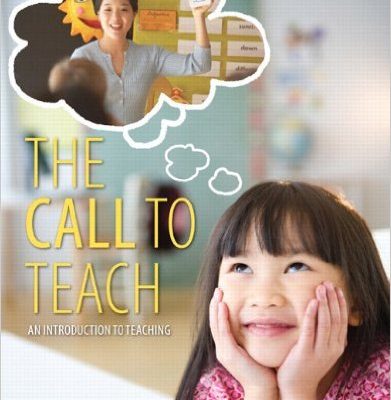If You Want to Be a Teacher, You Have to Know This (Part I)

If you’re looking to become a teacher, you should probably know about the InTASC standards. The Interstate New Teacher Assessment and Support Consortium (InTASC) has identified 10 standards of the knowledge, dispositions, and skills expected of effective teachers. They’ve developed a detailed list of professional standards for the licensing of new teachers, describing what new teachers should know, how they should perform, and the necessary disposition for effective teaching.
The standards transcend all subject areas and grade levels. And most colleges and universities use the InTASC standards to voice their expectations required for new teachers.
Here’s a brief description of five of the ten standards you need to know:
- Learner development . The teacher understands how students learn and how they develop. Teachers apply this understanding to each student in the context of the student’s cognitive, linguistic, social, emotional, and physical abilities, because they understand that students’ abilities differ. Teachers respect these student differences and leverage differences to allow all students to reach their full potential, focusing on and drawing out their individual strengths. Teachers actively take responsibility for their students’ growth and development, receiving input from and collaborating with families, colleagues, and other professionals.
- Learning differences. The teacher understands individual differences in culture, language, and socioeconomic status of his or her students, incorporating them in teaching to create inclusive learning plans. Teachers use this understanding to adapt their lesson plan content and delivery to ensure that they promote and encourage diversity, particularly for students who have special needs. Teachers respect these individual differences, believe that all students can achieve at high levels, make students feel valued, and assist students in realizing their full potential.
- Learning environments. The teacher understands how to develop and provide supportive learning environments for his or her students. Teachers apply this understanding to create activities that facilitate both individual and collaborative learning, while also promoting positive social interaction between students of different backgrounds. Teachers value their students’ input, allowing them opportunities to provide input, and listening attentively and responsively. Teachers support students in developing self-motivation, assisting them with problem solving, decision making, and exploration within a safe and validating environment. Teachers also engage appropriately with local and global communities to provide diverse learning environment opportunities for all students.
- Content knowledge. The teacher understands the central concepts of the subject or subjects that he or she is required to teach, with an in-depth understanding of how to make the content accessible and approachable to all students. Applying this standard, teachers commit to keeping up-to-date and relevant in their content areas, in both local and global contexts, incorporating and promoting cross-cultural understanding. Teachers encourage and appreciate students’ critical analyses and ensure that students are appropriately challenged with adequate resources to support their learning. And teachers are sensitive to the potential for bias, actively seeking to address it when covering any learning content.
- Application of content. The teacher understands how to apply and connect different concepts within the learning content, using this understanding to engage students and to help them apply these concepts to the real world. Teachers also use this understanding to draw from content material outside their own area of concentration, helping students to understand how their education as a whole is composed of interrelated components. Including local and global examples, teachers draw on culturally and socially diverse perspectives and collaborate with other teachers to provide an example that encourages students to explore, think critically, and develop their own innovative skills.
And those are only five of the ten you just have to know about. Stay tuned to find out five more inTASC guidelines that will help you become a stellar teacher.






